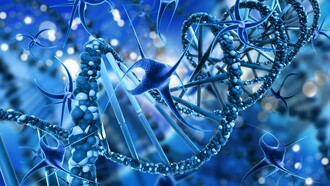Humans think that animals are not as cooperative as we are and that their behavior is repetitive and always the same. This is not the case, especially with regard to the search and sharing of food even if all species do not cooperate in the same way and with the same strategies. For example, ants do not cooperate like crows and ants do not cooperate like chimpanzees or other species of monkeys. The species-specific differences depend on the cognitive and intellectual abilities that animals and humans possess. Cognitively man is certainly the most complex of all, followed by anthropomorphous monkeys and then all other animals. A fundamental distinction that we must highlight is what kind of food we are talking about, because if a monkey is frugivorous or insectivorous it is one thing, if it is a question of hunting animals belonging to other species (predation and consumption of meat) it is another.
In the first case the cooperation is almost non-existent, each individual thinks of himself, but if it comes to hunting prey, things are different. In frugivorous feeding, some individuals can communicate to other members of the community where the food source is located and make it clear at what level of ripeness it is. In the case of tubers, it is not necessary to climb the trees, but just to dig the ground with hands. In this latter case, cooperation, rather than being directed towards food, is directed towards the dangerous presence of predators, a pantheress or a lioness which in this case are facilitated by the fact that their potential prey is on the ground, in the open savannah, not in the trees where it would be more difficult to grab. In the latter case, some monkeys (macaques, baboons, etc.), are clever not to be caught, in the sense that some individuals, acting as guards, communicate to their companions with vocalizations for frequency and tonality, which enemy is near it and what type of predator.
This, rather than dealing with food cooperation, has to do with moral behavior and the evolution of solidarity among all the members of a society. Things change a lot in the case in which the monkeys from potential prey become predators themselves. That is when it comes to hunting and eating an animal within their reach to organize themselves for this purpose. All this, regardless of the food cooperation, has nothing to do with solidarity among all members of society and with functional strategies in such circumstances, since the monkeys live a complex social life. These strategies are based on respect for certain rules and their safeguarding through the generations.
Food cooperation in the brown capuchin (Cebus apella)
Why did we choose this species among so many monkeys to discuss food cooperation? The reality is that the Brown capuchin is the most studied species in captivity because the researcher can better control the most important variables, that are performed behavior of the individuals during the tests. A significant experiment is constituted by a situation in which two individuals in order to reach a bowl of food that can’t be got at with their hands because of an interposed grate that prevents this, must pull the two extreme ends of a rope at the same time in order to be able to approach the bowl to which the rope is connected. If one of the two tries to pull the rope without coordinating with the other monkey, failure is obviously guaranteed as the rope slips away not being tied to the bowl.
Faced with these results, some might say that it is obvious that if in order to be successful they need to coordinate to achieve the prize. Monkeys, but not only them, are driven to cooperate. This is true, but it is not always said that all animals manage to pass the tests at these levels for the cooperative achievement of success. For example, cats and even dogs fail to achieve success when subjected to these tests. Dogs and cats don’t have the concept of food cooperation. They can’t even build it in their mind. While monkeys prove to possess it and demonstrate a positive attitude towards a collaborative partner and also a social availability towards the other. Precisely what is missing from many animals and often also from man, except in exceptional cases in which, for example, one who saves the life of another, after having made this gesture, wants to remain anonymous. But when a heroic act is accidentally filmed by a camera and the rescuer is aware of it from the beginning, other factors could intervene, including the vanity or recklessness of who made it at the cost of the risk.
Food cooperation in the common chimpanzee (Pan troglodytes)
Food cooperation and solidarity in the common chimpanzee are rules of life. If in a group the cooperation fails because some members do not respect it, other members could react violently by punishing those who have selfishly contravened these rules, especially in the division of food, independently how the offender obtained it and the subsequent danger. It is basically a form of mutual respect in which chimpanzees keep in their memory of the favors done and those received in the solidarity distribution of food resources. With an egalitarian division of food, there are more guarantees of survival for all.
The common exploitation of resources, especially when they are poor, during famines or epidemics, is fundamental. In the past societies of hunter-gatherers of the first hominids, compliance with these rules was fundamental to the survival of our ancestors. In these societies, it was not so much the nutritional value of the meat of the prey that was killed, but the moral value of the cooperation adopted in hunting. The first hominids inherited this behavior from chimpanzees. When chimpanzees go hunting for prey, the favorite one is the red colobus, a monkey that often shares territory with them, usually cooperating among three or four to six individuals. Each one is assigned a specific task (division of roles). One climbs the trees in which the victim is located to get him down to the ground, another chimpanzee has the task of pushing the prey in a certain direction, another to prevent him from climbing another tree, and finally, another that obstructs its escape route, grab and then kills the victim with a deadly bite.
In the end, the commensals gather and the meat is distributed equally among all the participants. This form of food cooperation in chimpanzees is unique among all monkeys and they should teach us humans that often selfishly do not share food with anyone but their family members and very little with those who live in serious economic hardship and that therefore do not have the opportunity to feed like everyone else. If a child dies every few seconds in the world due to diseases caused by a poor and low-protein diet, it should make us think.
Conclusion
The conclusion that we can draw is that the cooperation between men in the egalitarian division of food, has very distant origins, although in our days we prove to be less and less cooperative. The abundance of food available, for example in huge supermarkets, where it’s making us lose the sense of food solidarity that was much stronger in societies than in the past when food had to be found in the savannah or in the forest. To the extent that solidarity still exists in the man of today, we did not invent it. We have inherited it from animals, especially those closest to us, namely the chimpanzees. It is also true that the Brown capuchin show solidarity with each other for the achievement of a purpose.
But the fact remains that we have had to subject them to laboratory tests to prove the existence of their willingness to cooperate, while chimpanzees do it spontaneously in the wild. Most likely the Brown capuchins in nature are not as cooperative as they are in the laboratory, although they have still shown that they have concerns in intellectual and cognitive abilities. From this point of view, it would be concluded that we humans, rather than resembling the common chimpanzees, resemble the Brown capuchin!
Notes
Lee A. Dugatkin. Cooperation among animals. Oxford, Oxford University Press, 1997.
Craig B. Stanford. The hunting apes: Meat eating and the origins of human behavior. Princeton Princeton University Press, 2001.
Sarah F. Brosnan & Frand B.M. de Waal. Monkeys reject unequal pay. Nature, 405: 297-299, 2003.
Jennifer E. Stellar, Michael W. Ktaus, Vida M. Manzo & Dacher Keltner. Class and Compassion: Socioeconomic factors responses to suffering. Emotion, 12(3): 449-459, 2012.
Frans B.M. de Waal. Mama's last hug. London, Granta Editor, 2020.
Karsten Brensing. Das mysterium der tiere. Berlin, Aufbau Verlag GmbH & Co. KG.
Angelo Tartabini. Moral judgment. Wall Street International Magazine, May 3rd,2020.















